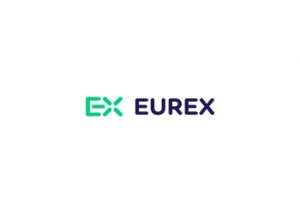Europe’s Sustainable Finance Disclosure Regulation (SFDR) is a major opportunity for asset owners, asset managers and service providers to align on common definitions for what sustainable finance and Environmental, Social and Governance (ESG) investing really mean. Some firms and commentators think that participation in SFDR funds means no or limited engagement in secured funding. We find that, in fact, funds can and should participate with supportive guidelines that hold true to the regulatory mandate. A guest post from Eurex.
Regulation 2019/2088 of the European Parliament and the Council, better known as the Sustainable Finance Disclosure Regulation, was passed on 27 November 2019. This important law put into place a framework for funds to promote ESG investment mandates that can be widely accepted by institutional and retail investors. Most of the regulation deals with transparency, mandating that all financial participants must publish substantial information at the fund and entity levels on their risk, investment and remuneration policies as relates to sustainability, whether or not they have ESG funds specifically. This is the first and so far only law globally that takes such an active stance on sustainable investing for the entire financial sector.
SFDR created three tiers of financial products, commonly referred to by their numbers in the regulation as Article 6, 8 and 9 funds. Article 6 funds simply mandate that disclosures on sustainability risks are made in promotional literature and specifically note for each type of fund manager how this disclosure ties into their fundamental regulation.
Article 8 takes this further when funds have a sustainable feature. Funds that promote environmental and/or social characteristics must include specific information on how their goals are met and how their index, if relevant, is consistent with this objective.
Article 9 disclosures are for funds with sustainable investment as their objective. For example, if carbon reduction is a goal, these require a detailed review of how the fund meets its objectives in reference to the Paris Agreement. If Article 6 considers sustainability risks, this may be considered ESG-lite while Article 8 is ESG moderate. Article 9 is the most ambitious. To put this another way, Article 8 funds may be Green but Article 9 funds are Dark Green.
A Final Report on draft Regulatory Technical Standards (RTS) from ESMA, EBA, EIOPA and the Joint Committee of the European Supervisory Authorities followed up with specifics on what disclosures should look like on each firm’s website. This RTS has become the de facto industry standard for disclosures. The technical details will apply from July 2022 and are expected to be bundled into one delegated act by the European Commission. This will put in place rules on Taxonomy specific disclosures, for Article 8 financial products with environmental characteristics or Article 9 products making environmentally sustainable investments.
Where does secured funding fit in?
Securities lending and repo are not mentioned in SFDR, and this has caused concern in the industry. The International Securities Lending Association (ISLA) has listed the four articles where SFDR and securities lending intersect, and the International Capital Markets Association produced an April 2021 white paper on the role of repo in green and sustainable finance. A further ICMA report on market comments in September 2021 found that collateral was the most likely place that repo and sustainable finance would intersect. The associations are closely watching SFDR unfold. However, there is yet to be a full opinion from asset managers, regulators or the industry about participation in secured funding from Article 6, 8 or 9 funds.
A recent survey from Finadium of large asset managers in securities lending found that, generally speaking, Article 6 and 8 funds were seen as eligible for securities lending but that Article 9 funds were not. Every European fund with a lending program had proxy recall mechanisms in place that predated SFDR and were comfortable communicating with their portfolio managers when a vote was arriving that required participation. Most funds also had collateral schedules that fit their funds’ mandates, even if that means accepting G20 bonds only as a failsafe. There did not appear to be any mystery to compliance with SFDR obligations and firms were comfortable with the process.
In repo, the launch of green bond baskets from Eurex in November 2020 has created the product framework necessary for any SFDR fund to safely participate in secured funding. Eurex has continued to monitor new bond issuances to validate whether they are eligible collateral, including the May 2021 launch of a German government green bond. Eurex found that “the new [German] bond will be eligible in Eurex Repo’s markets, including in the Green Bond GC Basket, as well as eligible for margin collateral at Eurex Clearing. This latest bond issued by the German Finance Agency shows the Federal Government’s commitment to achieving climate neutrality. Bookrunners report that the issuance was met with a positive response and healthy demand from investors.”
Functionally, there appears to be no difficulty in establishing a positive link between SFDR transparency rules and secured funding products. Secured funding promotes market liquidity, which is a general benefit to all investors. Tailoring proxy recalls or the acceptance of specific collateral types to Article 6, 8 or 9 funds is a question of purchasing green bond baskets, investing in green cash collateral vehicles, or maintaining collateral acceptance criteria that fit the various SFDR requirements. Operationally, the pieces are already in place.
The continued marketing challenge
Although we find that secured funding bears no challenge to SFDR funds and can enhance their activities, the continued marketing challenge and public perception of secured funding remains a work in progress. Not for nothing has every major agent lender and dealer now released articles on the value of secured funding, an explanation of SFDR, and how their businesses fit into the new directive.
We find that all financial market participants can continue to participate in secured funding whether they are Article 6, 8 or 9 funds. Even Dark Green, carbon reduction funds can lend securities or invest in green bond baskets. For all funds, the challenge is twofold: maintaining the right data management practices to ensure that fund objectives are met, and creating the positive understanding of the value of secured funding in the marketplace.
There is no conflict between SFDR and secured funding, and several reasons to argue that they are mutually supportive. More positive marketing and discussions with clients on process and product management are how the industry will move forward.
About the Author
 Gerard Denham
Gerard Denham
Senior Vice President, Eurex Fixed Income Funding & Financing
Deutsche Borse Group
Gerard Denham is a member of the Eurex Fixed Income Funding & Financing team in London, part of Deutsche Borse Group. Denham is a business development and product management professional with prior experience across the Asset Management, Global Custody, Investment Banking and Technology sectors previously located in Chicago, Frankfurt, London & Zurich. Currently a product specialist for Securities Finance and Collateral Management with a focus on the wide-ranging regulatory, market and technology developments impacting the financial markets, Denham is responsible for the business and strategic development of Eurex Clearing’s central counterparty (CCP) services.


